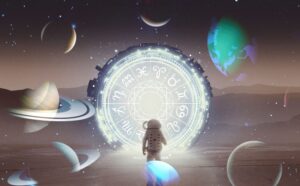We continue our journey into the fascinating world of black holes. In the first article of this series, titled “Can Black Holes Consume the Entire Universe“, we examined the general properties and effects of black holes on the universe. Subsequently, in our second article, “What’s Inside Black Holes? Singularity and the Information Paradox“, we focused on the internal structures of black holes and mysterious topics such as the information paradox. If you have not yet read these articles, we recommend that you first read these articles to gain a more comprehensive understanding of black holes. In this article, we will examine the effects of black holes on space and time, especially Einstein‘s theory of general relativity and the phenomenon known as “spaghettification,” in more depth.
How Black Holes Bend Time: Relativity and Time Dilation (Detailed Explanation):
Einstein’s theory of general relativity predicts that mass bends space-time and this bending is perceived as gravity. Black holes are the objects that bend space-time the most due to their extreme mass. This bending also affects the flow of time. For an observer approaching a black hole, time passes slower than for an observer far away. This phenomenon is called “time dilation.”
Scientific Language:
-
- Time dilation is caused by differences in gravitational potential. The gravitational potential is lower at a point close to a black hole, which causes time to pass slower.
- This effect must be taken into account even in technologies that require precise time measurements, such as GPS satellites, because the Earth’s gravity also affects time.

Spaghettification: The Fate of Objects Falling into a Black Hole (Detailed Explanation):
An object approaching a black hole experiences a process known as “spaghettification” due to extreme gravitational forces. The side of the object closer to the black hole is pulled more strongly than the far side. This causes the object to stretch and thin, much like a strand of spaghetti.
Scientific Language:
-
- Spaghettification is a result of tidal forces on objects approaching the event horizon of black holes. These forces act differently on different points of the object, causing its deformation.
- Tidal forces are directly proportional to the mass of the black hole and the distance of the object to the event horizon. The spaghettification effect is more pronounced in small black holes than in large black holes.

Space-Time Curvature and Gravitational Lensing Near Black Holes (Detailed Explanation):
The extreme gravity of black holes also bends the path of light. This can cause the image of objects behind the black hole to be distorted or multiplied. This phenomenon is called “gravitational lensing.”
Scientific Language:
-
- Gravitational lensing is a phenomenon predicted by general relativity and is a result of the curvature of space-time around black holes and other massive objects.
- Gravitational lensing is an important tool in observing distant galaxies and black holes. In this way, we can examine more distant regions of the universe and the distribution of dark matter.

Black holes have deep and complex effects on space and time. The theory of general relativity helps us understand these effects, while phenomena such as spaghettification and gravitational lensing reveal the consequences of the extreme gravitational forces of black holes. These topics contribute to our understanding of the mysterious nature of black holes and the fundamental laws of the universe.







